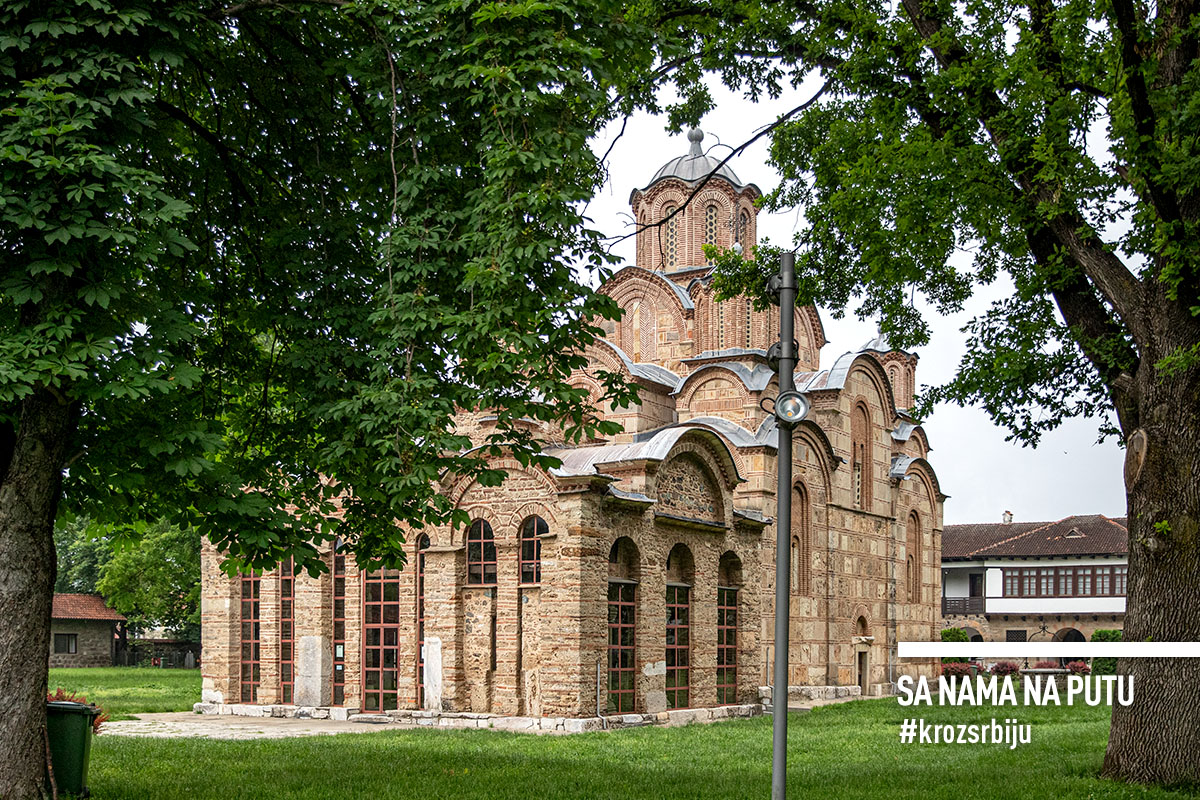At night, if a candle was lit in every Serbian Orthodox shrine in Kosovo and Metohija, the darkness would dissipate. It would bring daylight, all of a sudden. The firmament would flicker with the flame of golden crosses from the surviving domes and wax candles from the ruins of temples crucified through the centuries. Like a fire that never dies out. So great is their strain and so great is their number. Immeasurable, innumerable.
A piece of land like no other. Every step moves for at least a decade, every glance embraces a plenitude of magnificence, every prayer echoes in silence, every ancestral stone is a rampart of eternity. Places of worship as guides and guards, protectors and bell ringers, auguries and decorations. Of the same root and legacy. Every gallery and treasury. But UNESCO was not very generous. On the World Heritage List, it entered three monasteries (Dečani, Patriarchate of Peć, and Gračanica) and one church (Church of the Holy Virgin of Ljeviša), collectively called: “Medieval Monuments in Kosovo”.
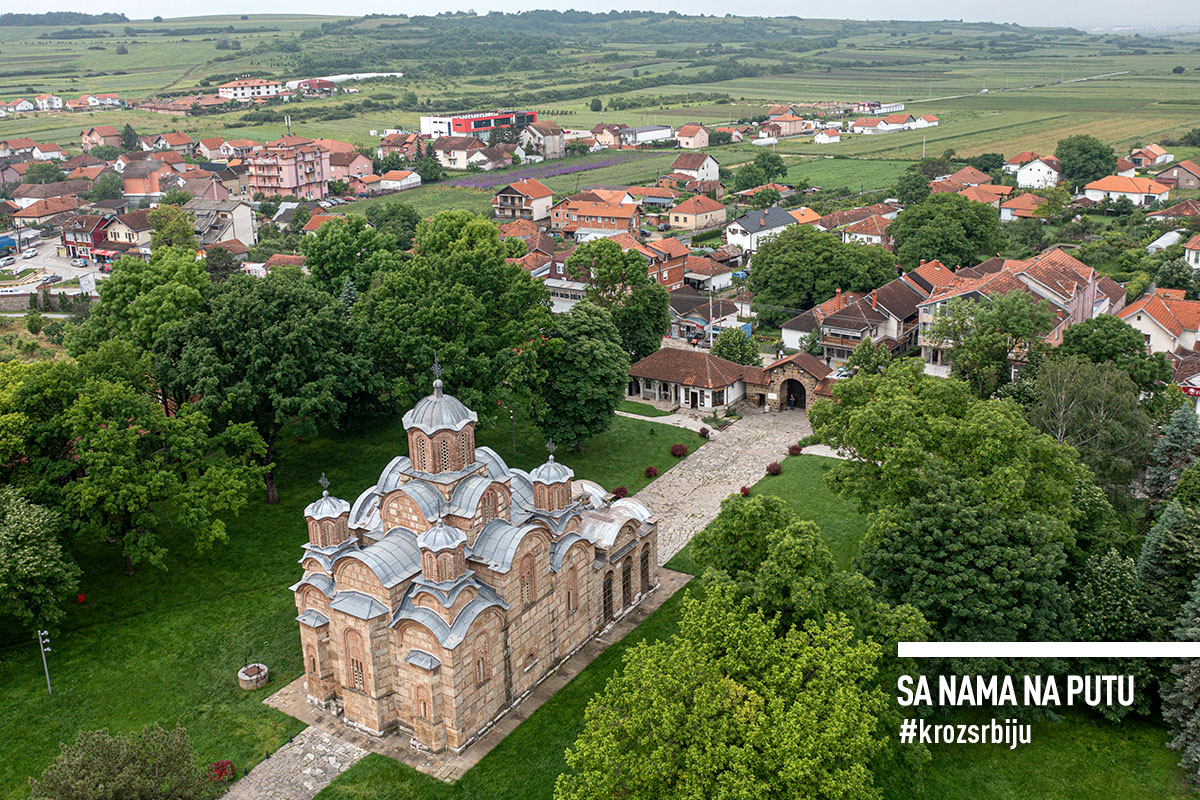
THE PATRIARCHATE OF PEĆ IS A HEARTH AND A COVENANT
We pass through Peć in the northwest of Metohija and reach the walls near the city and the guard house. After a short questioning, the barrier gate is raised, and we enter the monastery property. Another guard is at the gates. He only lets us in after obtaining permission from the mother superior of the monastery.
The monastery founds its home next to greenish impetuous water that runs through the fairy-tale Rugova Gorge. Peć Bistrica River is known for the caves (Serbian “pećina”) in which the monks lived, so the monastery and the city were named after them. In the monastery yard, there are the remains of the palace from the XIV century, a lapidarium, the high bell tower from the XX century, the monastic cemetery, and an unusual tree. A black mulberry tree, about 750 years old. Only a few decades younger than the first built Church of the Holy Apostles, also known as the Church of the Holy Saviour. It was built by Archbishop Arsenije I in the third decade of the XIII century. Centuries later, churches dedicated to St. Demetrius, Virgin Hodegetria, and St. Nicholas were built. The community of these four temples is one of the most significant monuments of Serbian spirituality, culture, and art.
The entire history of medieval fresco-painting styles is seen on the walls of the churches in Peć. Of particular importance are the compositions of Christ, the Mother of God, John the Forerunner, and the throne of St. Sava, as well as the frescoes of the archangel Gabriel and St. Mercurius, and the Nemanjić lineage in the narthex. There is not enough time to peer into every nook, to study every sarcophagus, to be inspired by the golden iconostasis, and to admire each of the frescoes individually. A magnificence that cannot be put into words. Many non-believers testify to the powerful feeling that permeated them within the Peć antiquities.
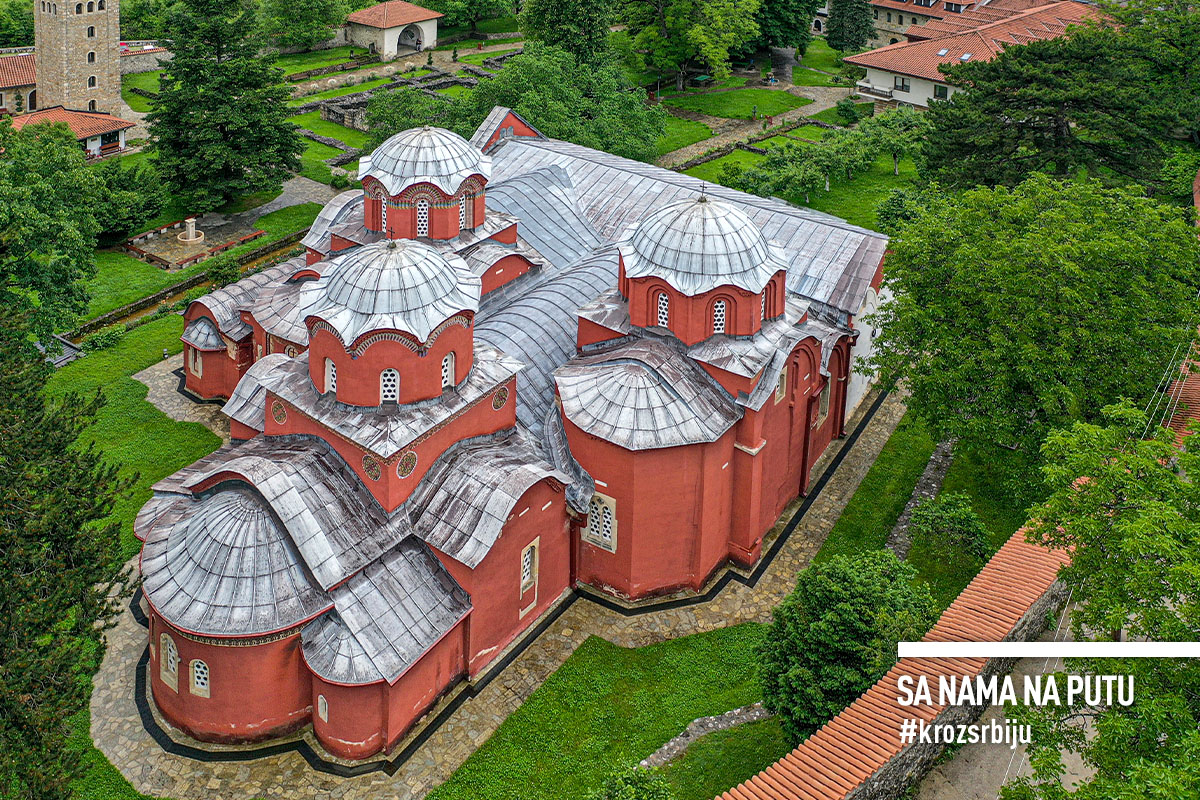
The first autocephalous archdiocese, established by Saint Sava in the Serbian lands in 1219, was called the Archdiocese of Žiča and Peć. At the time of the creation of the Serbian Empire, it was elevated to the degree of a patriarchate in 1346. The monastery in Peć has been appointed its seat. It has a turbulent and tragic history. It was abolished and restored, set on fire and looted. But it survived and, with its tradition, preserved the faith in all Serbian lands.
With the unification of the Serbian Church after the Great War, the patriarchate was restored in 1920. Ever since, Serbian patriarchs have been enthroned in the Peć Monastery. The witness to the Serbian existence and duration. To the guardian of tomorrow for “generations that are yet to come”.
VISOKI DEČANI MONASTERY ARE A SHRINE BETWEEN WAKEFULNESS AND SLEEP
The access and entrance to the monastery are completely unusual. A few kilometres from the town of Dečani, we encounter deceleration devices on the road and the KFOR checkpoint. They let us pass without a word.
There is a fork in the road, the right way leading towards the forest and the NATO-led training camp of the international forces, and the straight way leading towards the monastery. In front of the entrance, there is a guard house and a KFOR vehicle. Dečani is one of the most endangered Christian cultural monuments in Europe and the only Serbian sanctuary in Kosovo and Metohija under the protection of KFOR. The contingents of countries that secure the entry alternate, and the interior is guarded mainly by Italians. The guard with blond hair, light eyes, and rosy cheeks immediately flustered when he saw the recording equipment. The rules are strict. It is not allowed to bring larger bags, backpacks, let alone anything else. He talks on the phone, then asks for our IDs and lets us in with a slight smile. We pass through the iron gate.
In the centre, there is a building made of whitish stone. It is blinding. With the whiteness of purity and innocence. “God bless you,” Father Petar welcomes us. With an enlightened face and serene eyes. His every word and movement exude true spirituality. He is a supreme connoisseur of the unfathomable treasures of Dečani.
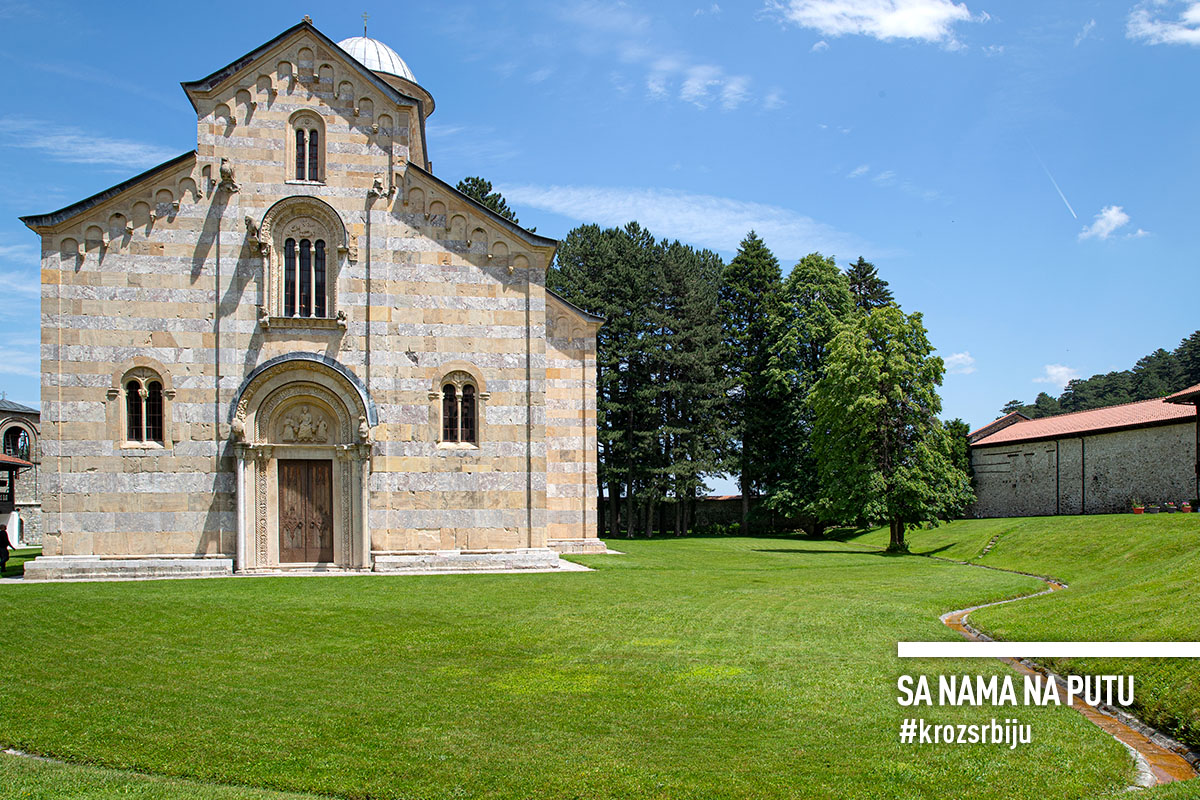
The place where this temple of God was to be built had been determined by Saint Sava, but he passed away before its construction. In the wilderness of the fertile Metohija plains overgrown with chestnut groves and pines. At the foot of the gigantic Prokletije Mountains, whose rugged rough peaks are forever shrouded in clouds, which threaten to thunder over anyone who intends harm to their jewel. In the valley, on the banks of the bustling Dečani Bistrica River.
The dream of the first Serbian archbishop was realized by King Stefan Dečanski. He started building his endowment in 1326/27 and it was completed by his son, Emperor Dušan in 1335. The masters from the coast and the chief architect, Vitus of Kotor, built the church wonderfully interweaving the elements of the Western Romanesque and Gothic, and the Eastern Byzantine style with influences of Serbian art. The works were personally supervised by Archbishop Danilo II.
A solemn, elegant, expensive church. Made of two-coloured blocks of marble stone polished to a shine. Alternately placed light yellow Peć onyx and reddish-purple Dečani breccia. “The appearance of the church strains the sight and the eyes of everyone that look at it, because the light of the marble shines so strongly as if there was a star shining from within”, noted an unknown travel writer in the 15th century. It is more than 36 meters long, 24 meters wide, and the dome reaches 29 meters. Hence Dečani became Visoki (Serbian for “high”). The highest.
The Father leads us to the massive wooden doors on the side of the church. A portal decorated with a rich, playful relief. Each placed around the doors and windows, as well as the wreaths and friezes of the blind arcades, is unique, with different motifs and figurines.
He takes us to the church dedicated to the Ascension of the Lord, Salvation Day. The stone threshold is hollowed out. Only this antiquity knows how many souls have trodden on it during almost seven centuries.
Art is omnipresent, interwoven with gold and vast wealth. The iconography was completed around 1350. More than 1,000 frescoes on 4,000 thousand square meters were painted by the most skilled artists of Dušan’s empire. And it was huge.
This is the largest and best-preserved gallery of Serbian medieval painting and a real treasure trove of Orthodox iconography. According to the number of characters and scenes and the skill of fresco painting, they belong to the top art of the Middle Ages, also known by a special name – Dečani painting. The frescoes of the Nemanjić family, the founder images of Stefan Dečanski and Emperor Dušan, and the portraits of Emperor Dušan with his wife and son are impressive. It is especially proud of the fresco of Jesus the Almighty, or Jesus with a sword. It is unique in the world.
Father Petar shows us the throne of Stefan Dečanski, a powerful, magnificent iconostasis from the middle of the 14th century, and next to it, a reliquary with the relics of the holy king, whose body is preserved and has miraculous powers as we are told. The last time the relics were dressed was in 1964 in the vestments that were hand-made by the then bishop, later Serbian Patriarch Pavle. Everything is original and preserved. Only the gold from the floor was taken away, says the father, pointing to the traces of the precious metal on the rectangularly carved marble floor with the finest patterns.
The monastery had a difficult life under the foreign rein, it was looted and raided. It was protected several times by Arnauts and Ottomans, but many times it was saved only by a miracle. Once when they wanted to turn it Turkish, and another time when they tried to move the remains of Stefan Dečanski, but the carriage would not move. The monastery was crushed by the boots of Bulgarians, Austro-Hungarians, and Germans, and in recent history, it was repeatedly attacked with fire and artillery weapons.
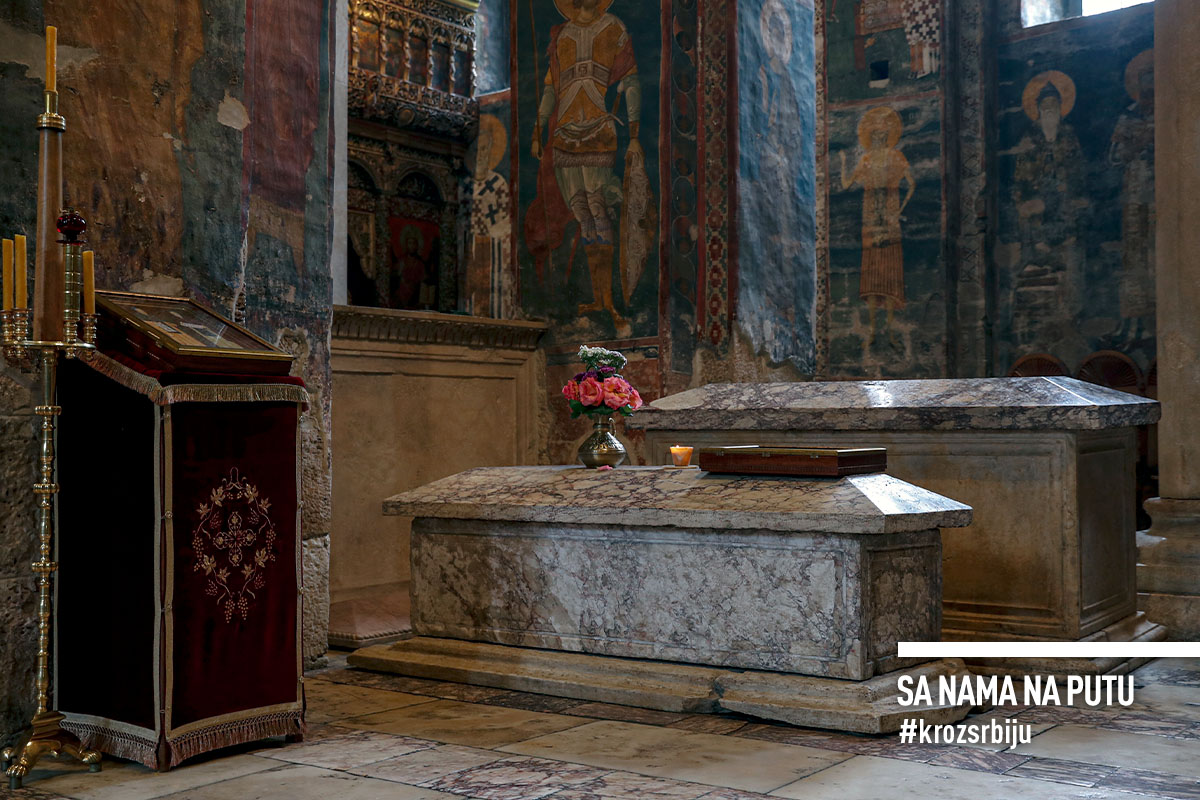
Father Petar invites us for some refreshment on the terrace of the lodging house overlooking the church. A young man is sitting at the table, with distinctly white skin, light eyes, and curly red hair. He doesn’t seem local to us, but we are reassured by Father Petar. “This is our Dutchman; he has become an Orthodox Christian”. Our curiosity did not engage him in the conversation much. We only found out that he had seen some pictures of Serbia on the Internet, travelled a bit, came to Dečani, and became Orthodox. The nature of Serbia is stunning, and the spirituality of the Dečani is even stronger. Then, a young novice appeared offering homemade juice and a hot pastry with cheese, melting in the mouth. Much of it is homemade, from the large Dečani monastery estate called “metoh” in Serbian. That’s how the whole area got its name – Metohija, since the entire land used to belong to the church.
All the time we can’t avert our gaze from Dečani. Luxurious, yet unobtrusive, majestic, yet modest. Like the warmth of the bosom of the homeland and the sanctity of the covenant of the forefathers. Timeless. As high as the earthly object can rise to heaven.
We leave the walls of the monastery, which was included in the World Heritage List in 2004, two years before the other three shrines in Kosovo and Metohija. We take our IDs from the guard and thank him, as we usually do at parting. “I’m just doing my job,” he responds quickly with a hint of justification. He must have noticed in our eyes that we expressed a lot more than a polite “Thank you”.
In the parking lot, there is a large group of people getting off a bus. “People come from different places and countries,” we recall the words of Father Petar. What should the humankind do was long ago said by wise Dostoevsky: “Beauty will save the world”. And the Dečani has spawned enough of this beauty of Fyodor’s to save the entire universe.


